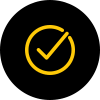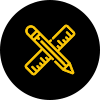Weather-ability is Measured through 3 Key Criteria
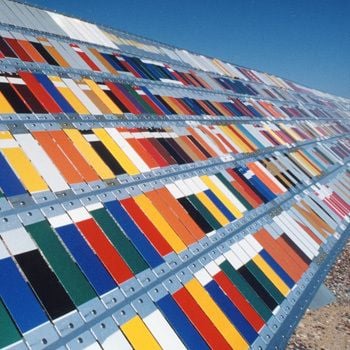)
Weatherability is measured through 3 key criteria's:
1. Colour retention
2. Gloss Retention (fading/chalking)
3. Retention of mechanical properties
You can add an additive such as UV to the products, however this does not make the product weatherable. It improves the colour and gloss retention only. It is also important to bear in mind it will usually reduce the mechanical performance of the product. With plastics when you add an additive to improve a type of performance you lose performance else where.
ASA / Weatherability is excellent and is truly a "weatherable" material. Mechanical properties ok but not as good initially from impact or chemical attack as a KYDEX or ABS material. Also if you add flame Retardant additive to this you lose virtually all impact and colour/ gloss retention .
ABS/ Good mechanical properties due to the rubber content, however once in contact with UV/ chemicals, the product losses performance and visual properties. Once Flame resistance added you reduce the mechanical property and performances slightly also.
KYDEX / Very good mechanical properties and as it is inherently flame retardant. You do not lose any performance mechanical properties even if weathered, as the product holds all of it performance properties when in contact with UV and chemicals, however visually the product will lose colour retention and gloss if weathered.
To make a decision on the above the customer really needs to decided which criteria is more important. From weather-ability, performance properties i.e impact/chemical resistance, FR performance, Colour/gloss retention etc/ as you can see you can not have all the requirements listed above in one product.
PERSPEX® Pool Guards
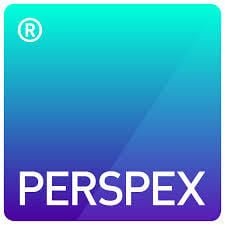)
Failure to comply with new legislation can result in fines of up to $20K ..
You can find out more information about your responsibilities if you click here
We can supply PERSPEX® or LEXAN sheet product in flat sheet or bent, to bring your existing Pool Fencing up to the required standards.There are two types of materials that are approved and can be used on POOL Fence Guards. PERSPEX® Sheet (Acrylic) & LEXAN Sheet (Polycarbonate).
PERSPEX® sheet is the most widely used material for POOL Fence Guards to meet the strict standards laid down by the Gold Coast City Council & Queensland Building & Construction Commission Safety Standards.
Thickness is normally 3mm thick clear but for larger areas 4.5mm thick material may be neededtalk to us and we can advise.
PERSPEX® will crack under severe impact, but will not shatter like glass..
LEXAN Polycarbonate is sold under the trade name of LEXAN and has a superior impact strength of up to 250 times that of glass, it is fire resistant & mechanically a lot stronger but more flexible material.
UV LIGHT RESISTANCE & CLARITY:
LEXAN Polycarbonate has a UV protected film on both sides of the sheet of which gives a guaranteed 10 years of service outdoors whereas PERSPEX® is guaranteed for 30 years as it has in-built UV stabilises within the material.
PERSPEX® can be polished using "Brasso" to remove fine scratches whereas Polycarbonate is a lot more difficult to remove marks & scratches.
MACHINE CUTTING:
Both materials can be cut with conventional jig-saws, routers and panel saws.
The material must always be laid flat on a surface and be well supported, when doing any cutting, use carbide tipped negative rake saw blades for best results. (Available at Bunnings)
PERSPEX® can be cut on a Laser Machine leaving polished edge or router cut whereas LEXAN Polycarbonate can only be cut using a jig saws, routers & panel saws.
When drilling into PERSPEX® or LEXAN Polycarbonate, use a drill with a tip that has been ground to give a neutral rake at the cutting edge(or use a blunt drill) Always have the material well supported and do not rush, use a block of wood under where you are drilling.. if it drills to easily the drill bits too sharp!
Do not place holes too close to the edge..the material will break..suggest 30mm in from edges.
DO NOT POP RIVET PERSPEX® sheet, it will crack, always drill an oversize hole, say 6mm dia. and use a roofing screw with a rubber washerdo not over tighten.the larger hole is to allow for expansion and contraction of the material.
LEXAN Polycarbonate should also not be pop riveted as cracks will appear around this area over time.
CLEANING PERSPEX SHEET:
Both materials are easily cleaned using a 100% cotton cloth or microfiber and simple soapy water..Water based window cleaners such as WINDEX are ideal.
Do not use any organic solvent based cleaners on these materials as they will attack the surface causing damage..
DURABILITY:
LEXAN Polycarbonate Sheet scratches more easily than PERSPEX®, so it depends where it is being used..from an earth moving machine (requires impact resistance) to a pool fence guard (a guard only).
PERSPEX® sheet also has much better chemical resistance than LEXAN Polycarbonate.
Both products may be guaranteed for outdoor use, although LEXAN Polycarbonate does not have the same UV guarantee than PERSPEX® outdoors.
LEXAN Polycarbonate sheet is approx.. 35% more expensive than a PERSPEX® sheet of the same size and thicknesshowever, where you would use 4.5mm thick PESPEX®, you can use 3mm Thick LEXAN Polycarbonate.
Attached is a small information sheet...DOES YOUR POOL COMPLY?
PERSPEX® Sheet vs LEXAN Polycarbonate Sheet
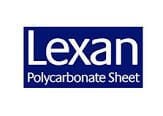)
Each type is manufactured differently and both with different raw materials, with the end result being physical properties of each material being suited to a particular application.
Acrylic is also known as PMMA is Polymethyl methacrylate. Is a synthetic resin produced from the polymerization of methyl methacrylate. A transparent and rigid plastic.
This material trades under the name PERSPEX® along with a lot of other trade names.
PERSPEX® can be found in everyday life from woman's Acrylic jewellery to Acrylic Display cases, shatterproof windows, skylights, illuminated signs & acrylic Pool Guards.
It has an impact strength 17 times stronger than glass, has excellent UV resistance, can be made into virtually any shape, have a range of colours and thickness & is an excellent alternative to glass as it does not shatter.
LEXAN Polycarbonate is sold under the trade name of LEXAN or Makrolon and has a superior impact strength of up to 250 times that of glass, it is fire resistant & mechanically a stronger but more flexible material.
LEXAN Polycarbonate is used in banks as pop up screens as the material is virtually bullet proof, it is also used in armour guard vehicles & in areas where product or people can be protected against vandalism.
LEXAN Polycarbonate has a UV protected film on both sides of the sheet of which gives a guaranteed 10 years of service outdoors whereas Perspex® is guaranteed for 30 years as it has in-built UV chemical stabilises within the material.
LEXAN Polycarbonate sheet has a 89% light transmission of light, compared to 92% for Acrylic.
Acrylic can be polished using "Brasso" to remove fine scratches whereas Polycarbonate is a lot more difficult to remove marks & scratches.
PERSPEX® cast acrylic sheet has a wide range of working temperatures..from -4 Deg. C up to 90 Deg. C.it will expand with temperature increase so care should be taken to allow for expansion and contraction on large sheets.
LEXAN Polycarbonate on the other hand, can handle temperatures up to -5 to 115 Deg. C.
MACHINE CUTTING:
Both materials can be cut with conventional jig-saws, routers and panel saws.
The material must always be laid flat on a surface and be well supported, when doing any cutting, use carbide tipped negative rake saw blades for best results. (Available at Bunnings)
PERSPEX® can be cut on a Laser Machine leaving polished edge or router cut whereas LEXAN Polycarbonate can only be cut using a jig saws, routers & panel saws.
When drilling into PERSPEX® or LEXAN Polycarbonate, use a drill with a tip that has been ground to give a neutral rake at the cutting edge(or use a blunt drill) Always have the material well supported and do not rush, use a block of wood under where you are drilling.. if it drills to easily the drill bits too sharp!
Do not place holes too close to the edge on Acrylic..the material will break..suggest 30mm in from edges. DO NOT POP RIVET Acrylic as it will crack, always drill an oversize hole (6mm Dia.) and use roofing screws with a rubber washer when fitting. Do not overtighten.this is to allow for expansion and contraction of the material. Whereas Polycarbonate is virtually unbreakable.
CNC MACHINING:
Both materials machine well in a CNC machine. These machines use solid Tungsten Carbide tool bits and can make any 3D design.
Both materials are machined to make various components used in Signage, engineering, scientific, transport industries depending on application.
PERSPEX® can be Laser cut to give a nice edge or diamond polished through a machine.
You can also use a hydrogen flame to polish the edgeall of which is not available to the general publicthis is processed at our factory.
Alternatively both materials can be wet & dry paper 800, then 1000, then using a pistol drill & a rag buff & aluminium buffing wax bar.buff the edge to a mirror finish.
LEXAN Polycarbonate can be diamond polished through a machine or by polishing the edge using Tetra Hydro Furan solvent and wiping the edge of the polycarbonate..this will give a matt finish only.
HEAT BENDING:
PERSPEX® sheet can be bent on a heated "Line Bender" to form a right angle bend.
Also thermo-formed to different shapes by heating up to 165 to 170 Deg. Cent.
It must be cooled over a former to hold its shape.
Polycarbonate sheet can also be bent on a heated "Line Bender" to form a right angle bend.
LEXAN Polycarbonate is very difficult to form to shape as the temperature needs to be up to 175 to 190 Deg Cent. The material cools very quickly and it is difficult to form.
PERSPEX® can be glued with solvents (Dichlorethane) or thickened glues such as Weld-On 16 glue..or ACRI-Bond 110 Adhesive.
LEXAN Polycarbonate can be glued using Tetra Hydro Furan solvent or a thickened glue such as ACRI-Bond 105 adhesive.
CLEANING PERSPEX®/ LEXAN SHEET:
Both materials are easily cleaned using a 100% cotton cloth or microfiber and simple soapy water..Water based window cleaners such as WINDEX are ideal.
Do not use any organic solvent based cleaners on these materials as they will attack the surface causing damage..
DURABILITY:
LEXAN Polycarbonate Sheet scratches more easily than PERSPEX®, so it depends where it is being used..LEXAN for a earth moving machine (requires impact resistance), Acrylic for a pool fence guard (a guard only).
PERSPEX® sheet also has much better chemical resistance than LEXAN Polycarbonate.
PRICE:
LEXAN Polycarbonate sheet is approx.. 35% more expensive than a PERSPEX® sheet of the same size and thicknessbut where you would use 4.5mm thick PESPEX®, you can use 3mm Thick LEXAN Polycarbonate due to its toughness.
LEXAN Polycarbonate Sheet comes in range of thicknesses..
1, 1.5 & 2mm thick in Clear only.
3, 4.5, & 6mm thick, Clear, Opal & Tint,
10mm thick Clear & Tint colours.
PERSPEX® Sheet comes in a range of thicknesses up to 50mm thick.
1.5mm thick..Clear only
2mm Thick.Black, White, Clear & Opal
3mm Thick..full colour range
4.5mm Thick. Black, White, Clear & Opal & some colours
6mm. Thick. Black, White, Clear & Opal & some colours
8mm. Thick. Clear Only
10mm. Thick. Black, White, Clear & Opal & some colours
12mm. Thick. Black, White, Clear & Opal
20mm. Thick. Black, White, Clear & Opal
25mm. Thick. Black, White, Clear & Opal
CONCLUSION:
Both materials have different properties and should be chosen depending on the application.
PERSPEX® sheet finds uses in areas where optimal weather and in-service resistance are required, since it can withstand the weather, sunlight and the elements better than LEXAN Polycarbonate.
LEXAN Polycarbonate, due to its toughness and durability is more suited to Police hand Shields, signage, roofing as it has high impact resistance to storm damage, earthmoving equipment cabin windows, machine safety guards, bullet proof windows on armoured vehicles & pop up bullet proof screens in banks.
LEXAN Polycarbonate is not the best choice for UV resistance but has many other advantages as a material.

